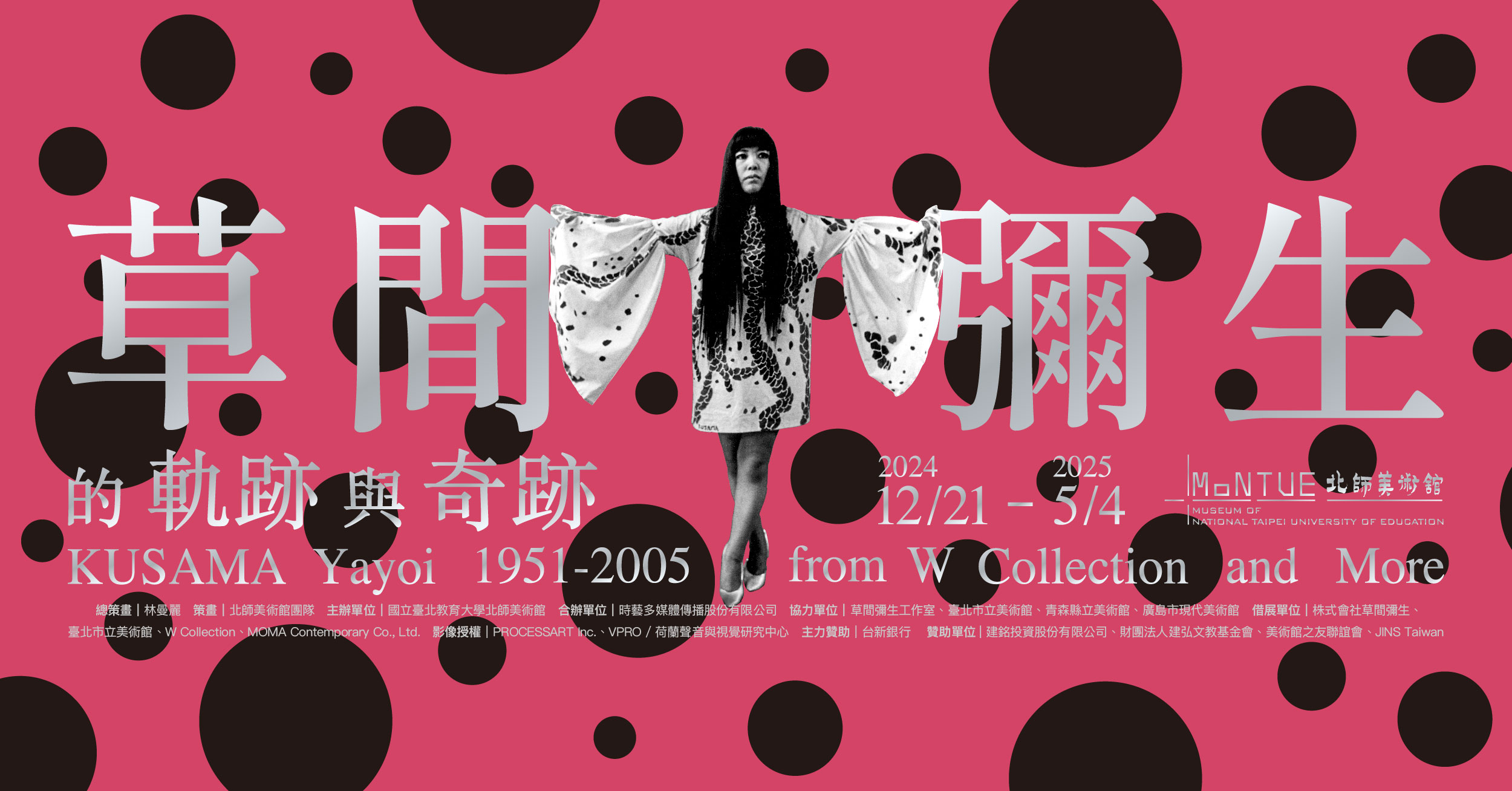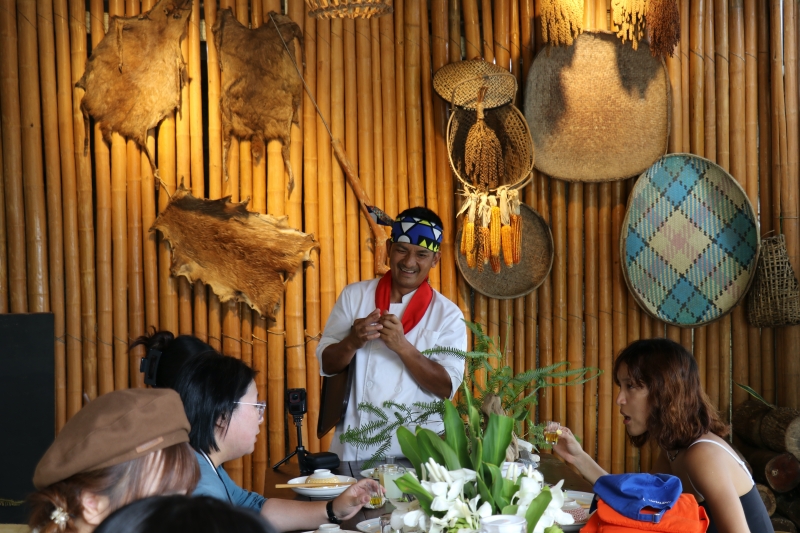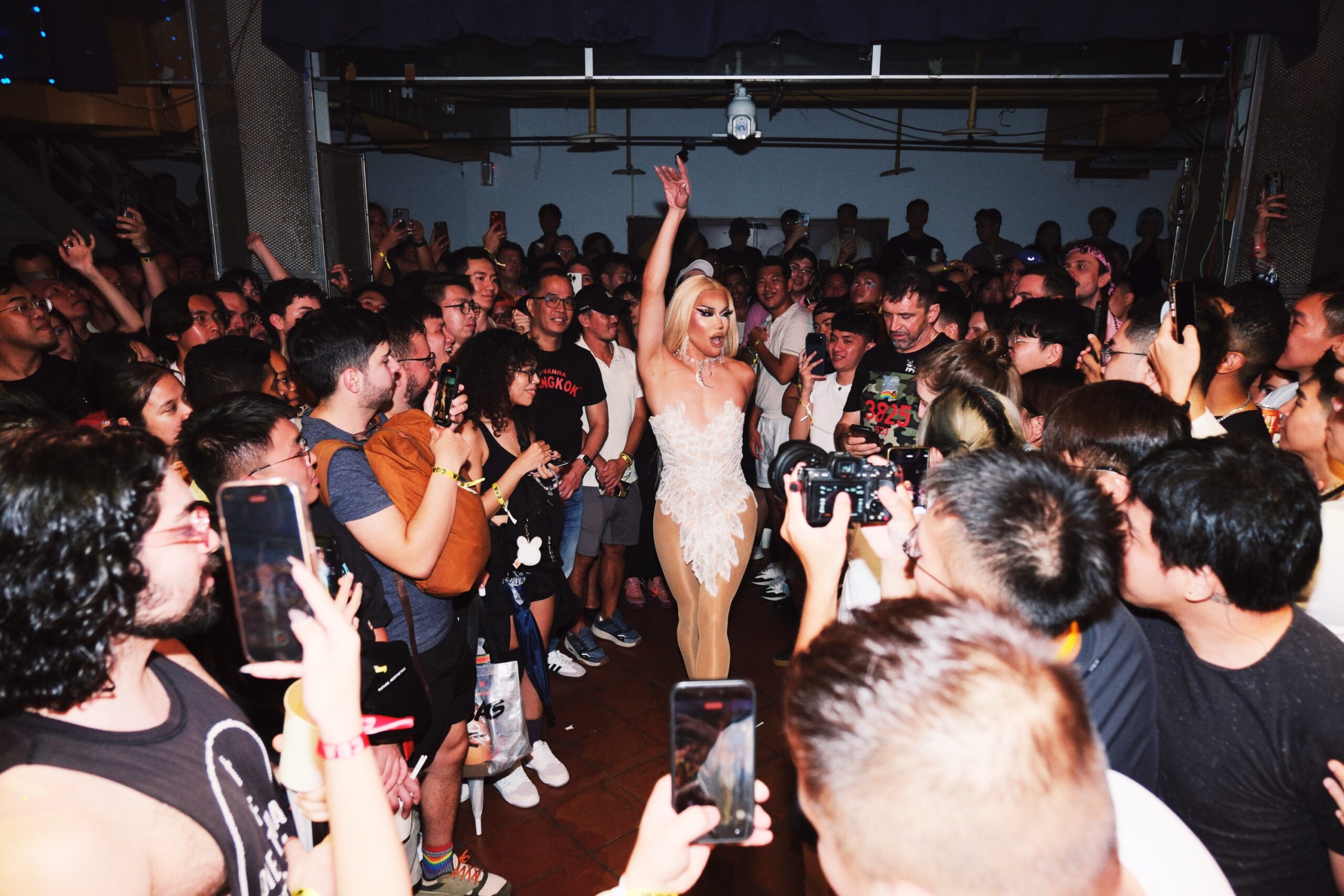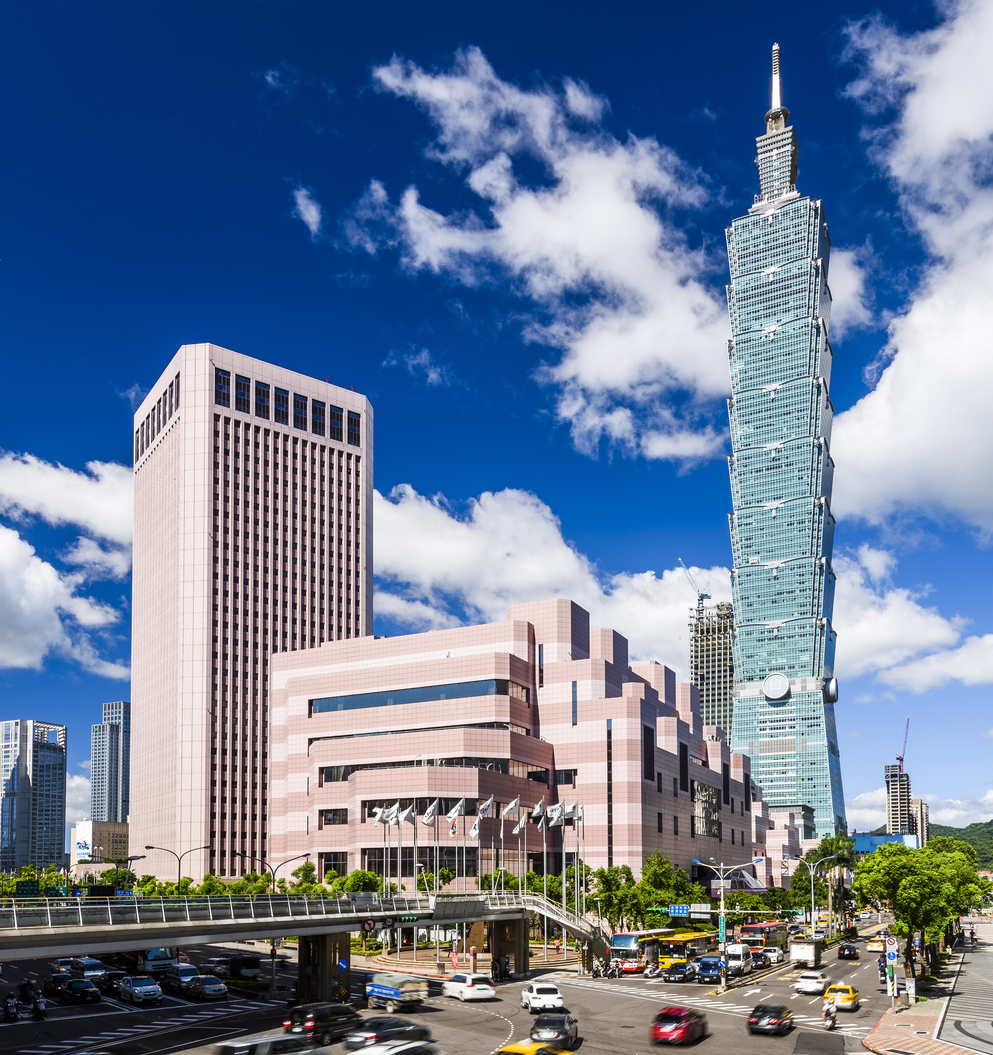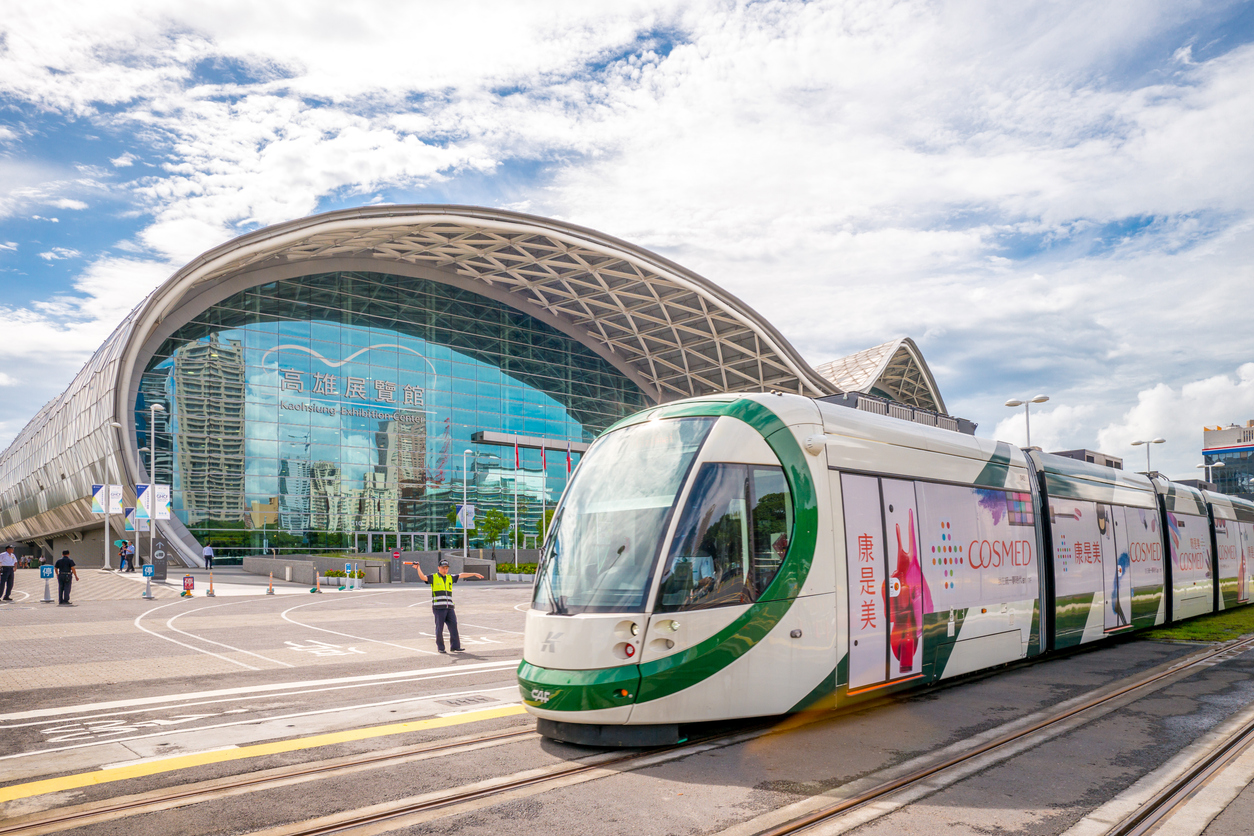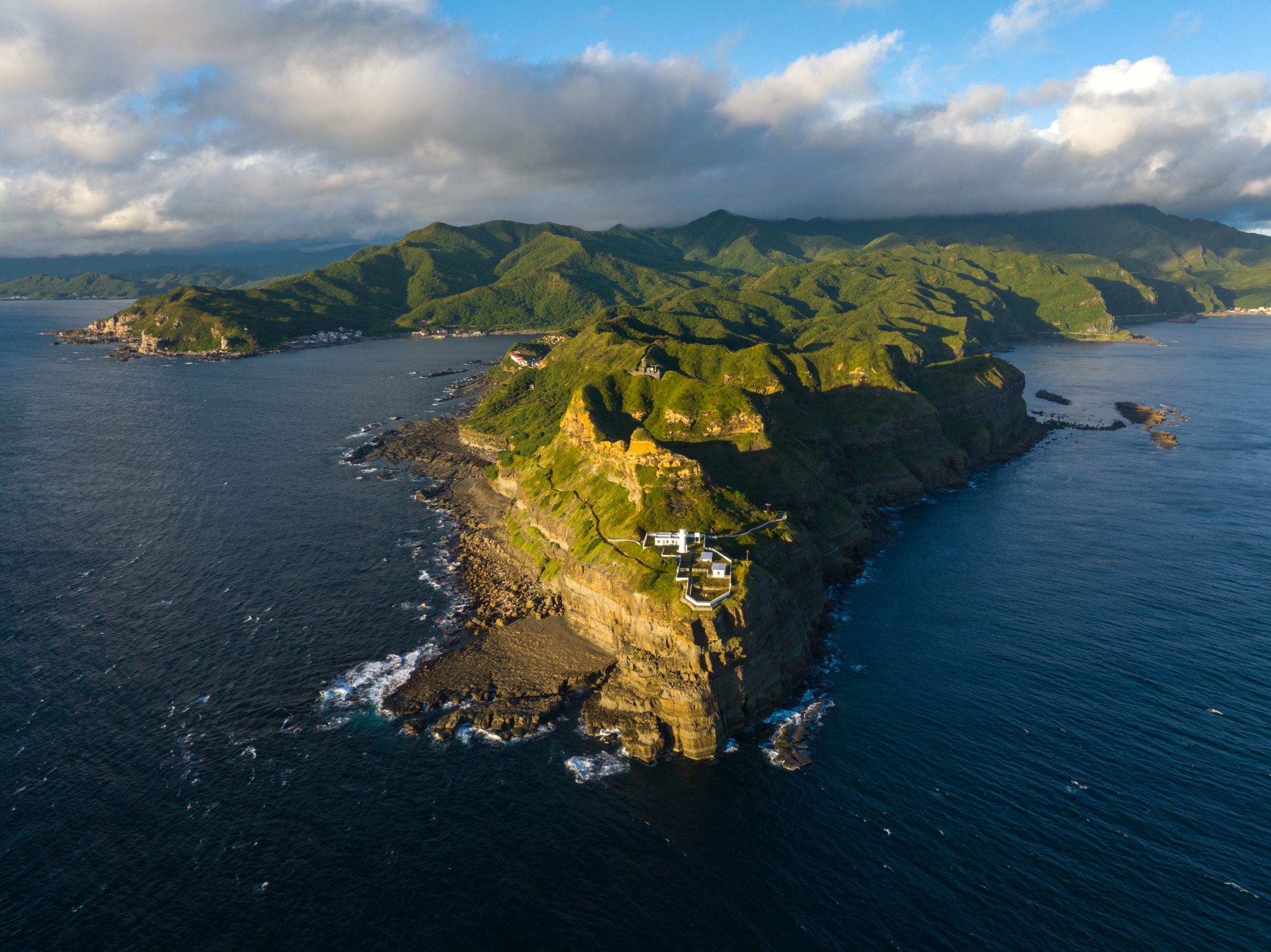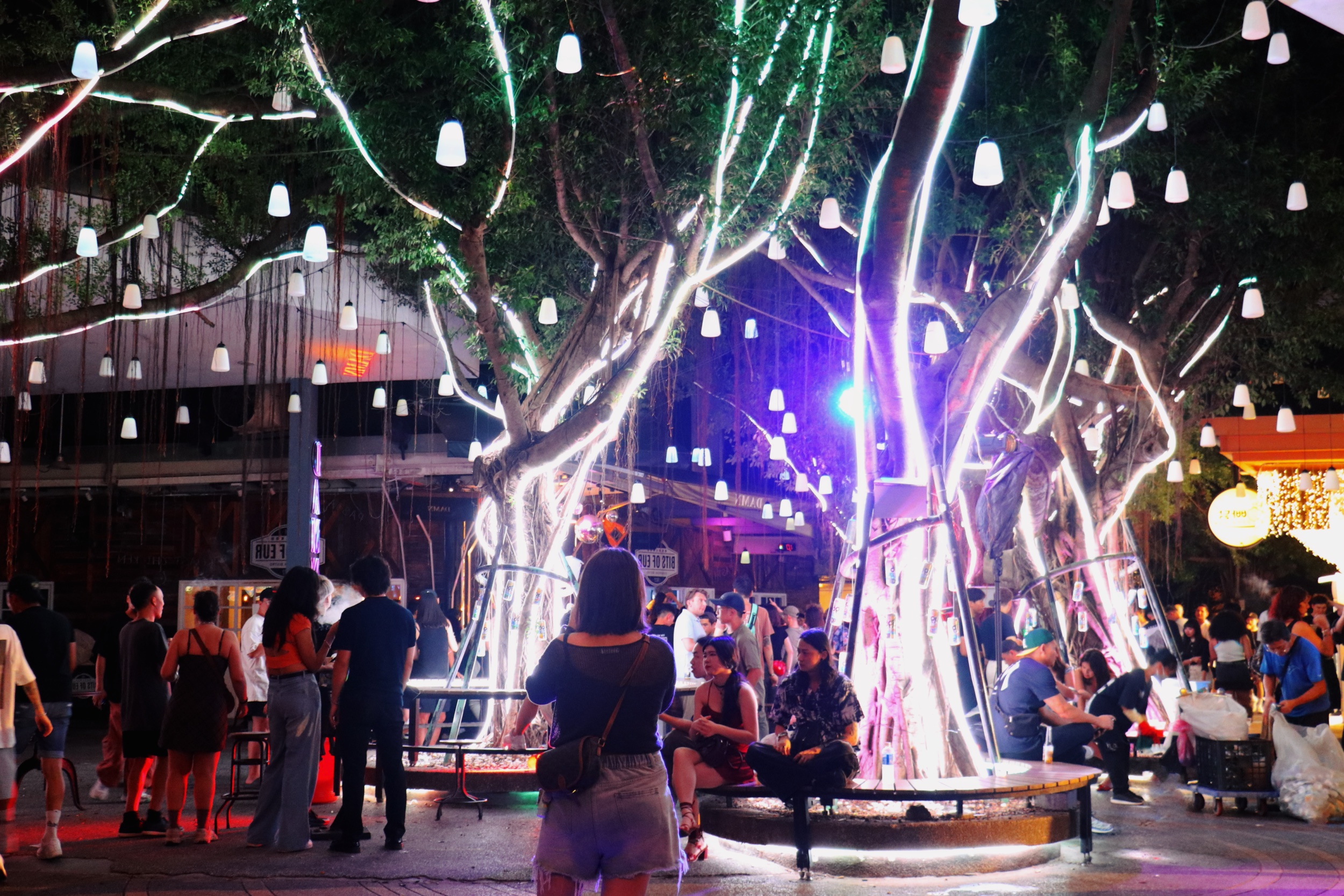Author Cat Thomas
Photographer courtesy of the Museum of National Taiwan University of Education
What do you think of when you hear the name Yayoi Kusama(草間彌生)? For many the first images that spring to mind may be polka dots and pumpkins, or perhaps her mesmerizing Infinity Mirror Rooms. Indeed, exhibitions of her work often feature striking large-scale installations that physically drop people into the midst of Kusama’s vision.

Kusama is undoubtedly a global cultural icon, with a boundary-pushing and -shattering career spanning several decades – which continues to this day – so it is a formidable challenge to curate an exhibition in a smaller space and capture the ripples and intricacies of her ever-changing artistic journey.
However, an intimate, yet enthralling exhibition at the Museum of National Taiwan University of Education (MoNTUE) manages to do exactly that in Trajectory and Miracle: Kusama Yayoi 1955 -2005 from W Collection and More.
The excellent curation by Lin Mun-lee (林曼麗) and her team makes this exhibition well worth a visit. Although MoNTUE is not as large as other venues that have hosted dedicated Kusama exhibitions in Taiwan previously, the smaller size and thoughtful layout affords an intimacy that permits the visitor to consider Kusama’s struggles and triumphs in a particularly affecting way, especially if you can manage to visit at quieter times.
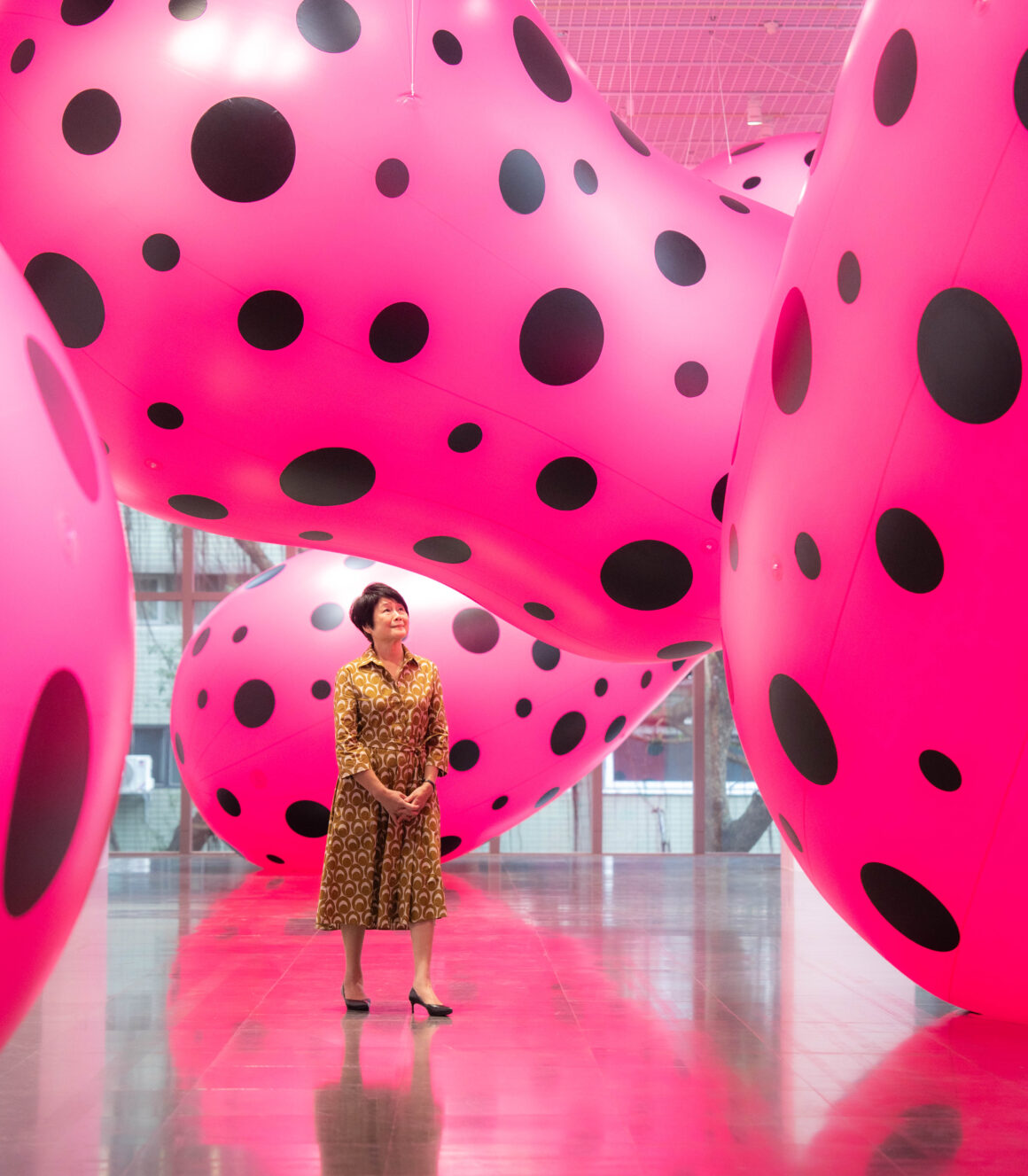
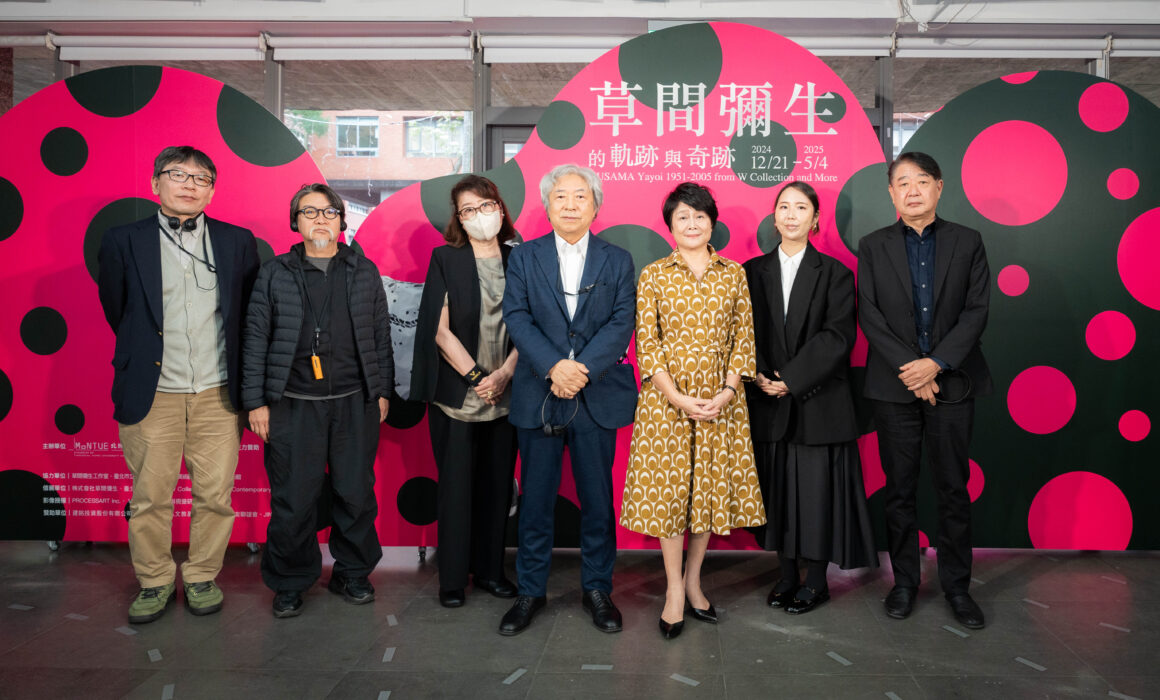
For her avid followers, the retrospective of 70 works – which includes paintings, collages, soft sculptures, installations, and video – offers the chance to see lesser-displayed pieces and rare film footage, with many pieces making their debut in Taiwan, while for those less familiar it equally serves to provide a solid grounding in her work and accompanying life story over six decades of an astonishing career which is still ongoing.
Kusama, who was born in 1929 in Matsumoto City, Nagano, had a childhood that she has described as ‘disconsolate’. Growing up on the family seed farm with parents who were often at odds with each other, Kusama began to experience auditory and visual hallucinations from a young age and the exhibition allows the attendees to appreciate how she has used her art as a method to deal with her mental illness. Informative introductory panels – in Mandarin, English, and Japanese – place each piece and section in context.
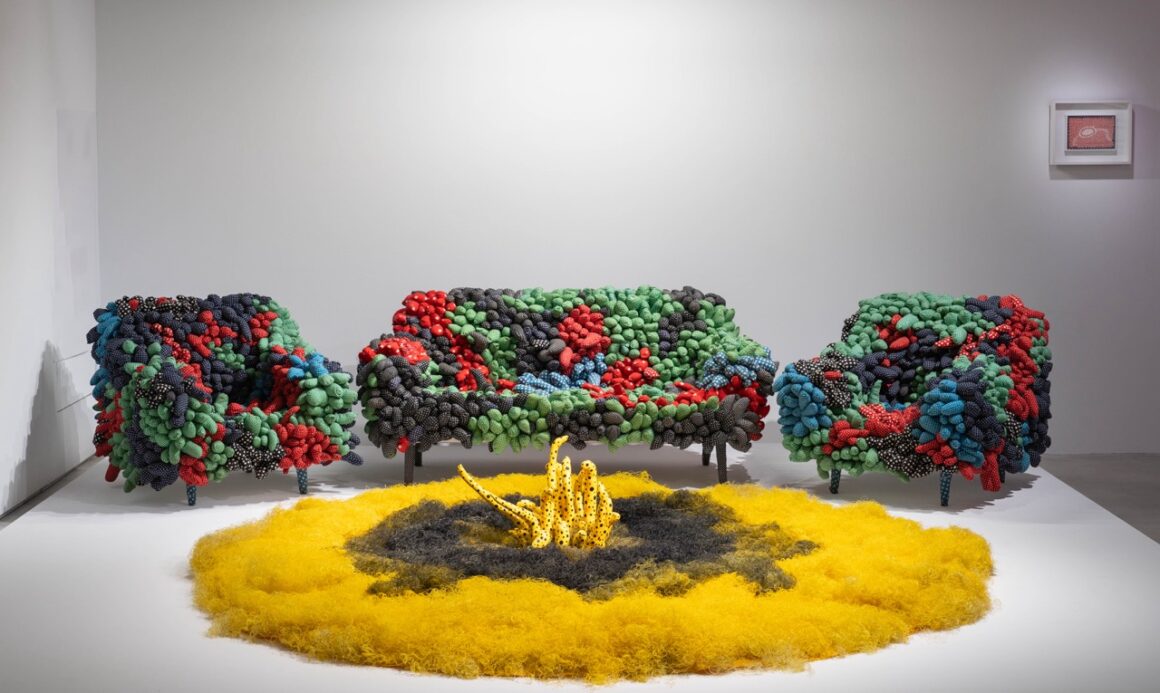
The arrangement, which jumps around the timeline, leads the visitor from the often ebullient to the searingly personal exploration of art created in the early years of her voluntary residence in a psychiatric hospital in Tokyo to video documentation of her ‘Happenings’ during her time in New York and Europe, and installations and garment work.
With Kusama’s reputation now so firmly established on a global scale, and with the most eye-catching easily capturing the public’s imagination, it’s a treat to enjoy some rarely seen early works from the private W collection alongside better-known work and archive footage from Kusama’s Happenings.
The layout of the exhibition reflects this, by starting with Kusama in Full Bloom where attendees are greeted with a reproduction of Dots Obsession (1998/2024), giant florescent pink inflatables, which stretch up over the height of two floors. The original version was created for the Taipei Biennial 1998 and installed in the atrium of the Taipei Fine Arts Museum (TFAM). At the time, Lin Mun-lee was the Director at TFAM and the installation marked the first time Kusama’s work was displayed in Taiwan.
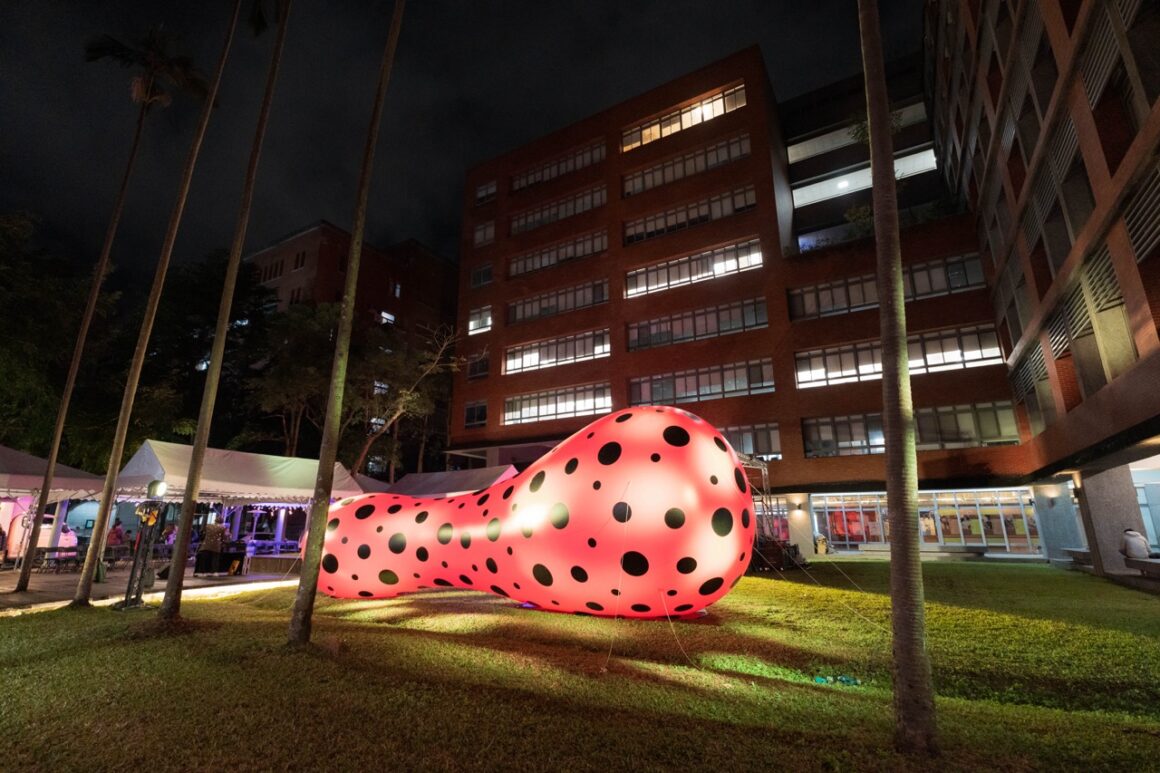
The remainder of this section features post-1985 works, many of which fall into Kusama’s self-coined description of “Psychosomatic Art”, and which often combine her obsession with sex, food, dots, and her Infinity Nets. Soft sculptures on this floor include Night 1 (1985) and White Summer (1985), and three sets of Shoe sculptures (1997, 1999, and 2005). The paintings include Flower (1989) and Pumpkin (1990) and Flower Petals At Night (1995) and a selection of her Infinity Nets series. Mixed media installations include Beyond My Illusion (1999) and Kusama’s Room (1999).
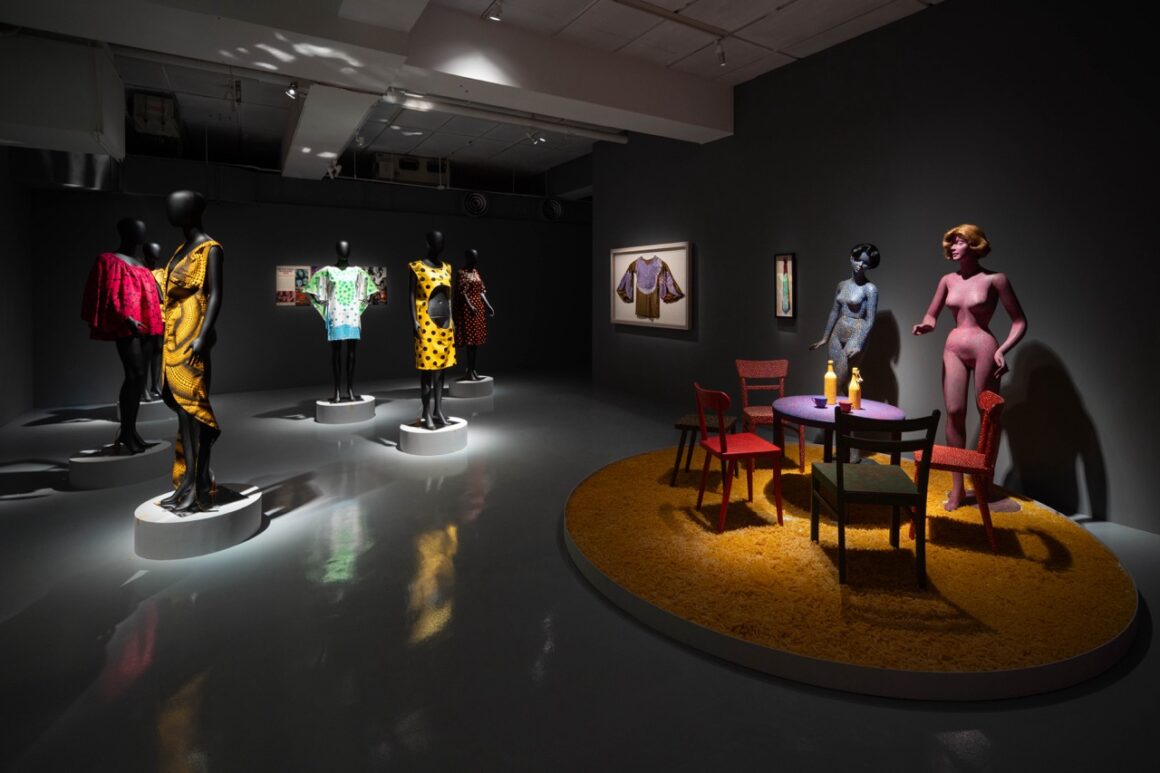
The third floor drops back to earlier works. Although Kusama was already well-established in the Japanese art world, prior to her move to New York in 1957, according to Liu I-Ying (劉依盈), part of the MoNTUE curatorial team, Kusama destroyed much of her work to prevent her mother from selling it and making profits off endeavors that she had not been supportive of. However, some pieces survived in private collections and are displayed in Dots as Origins. Collages and paintings include Dots (1951), Airmail-Accumulation (1963), and The Sea (1958).
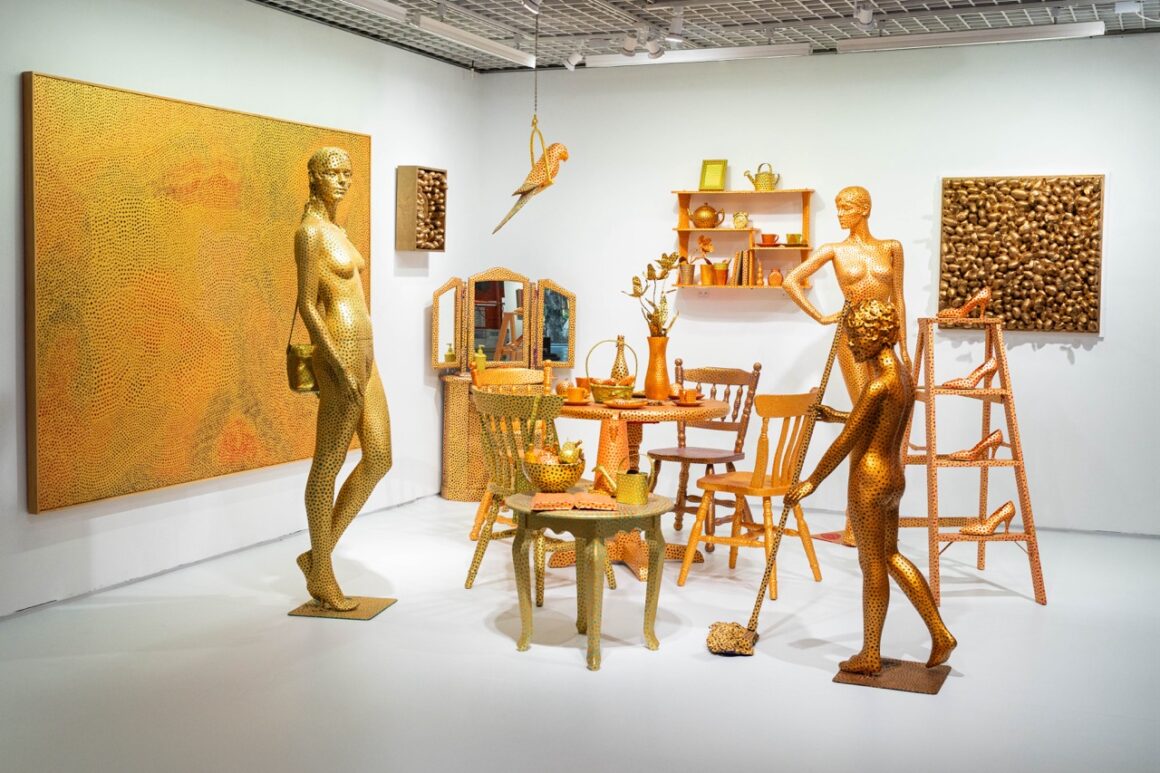
Kusama’s Quiescence walks you through a period where Kusama was largely shunned by the then-conservative Japanese art scene and a period of personal loss after the death of her confidant, American visual artist and filmmaker Joseph Cornell, and her father. Installations on this floor include The Return to Eternity (1988-91) and Spring Festival (1981). Paintings include Memories of My Soul When I Was Alive (1975), Seabed (1980) and Forest (1981).
The basement exhibition, Love Forever, covering her Happenings and Fashion work, is well placed in the windowless dark-walled space which makes the garment artwork jump out with a sense of particular vividness. Although by the time I reached this floor it was somewhat busier, the attendees wandering between the brightly adorned mannequins almost added to the atmosphere, perhaps giving the tiniest sense of what it might have been like to attend a show in sixties New York.
The four documentary installations and displayed news clippings clearly convey how Kusama’s work pushes boundaries and the atmosphere and buzz that surrounded her ground-breaking forays into the exploration of sexual liberation as anti-war activism through art in the sixties. It should be noted that one section of the film installation, Flower Orgy (1968), which documents a Happening at her New York Studio, and footage from her 1967 Love Room exhibition launch at the Orez Gallery in The Hauge, and the concurrent Happening Naked Body Festival: Love and Music is out-of-bounds for under-18s. However, the other room which shows footage from Self-Obliteration and Infinity Net both Performed by Yayoi Kusama at Video Gallery Scan, Tokyo (1983, 1984) is open to all ages.
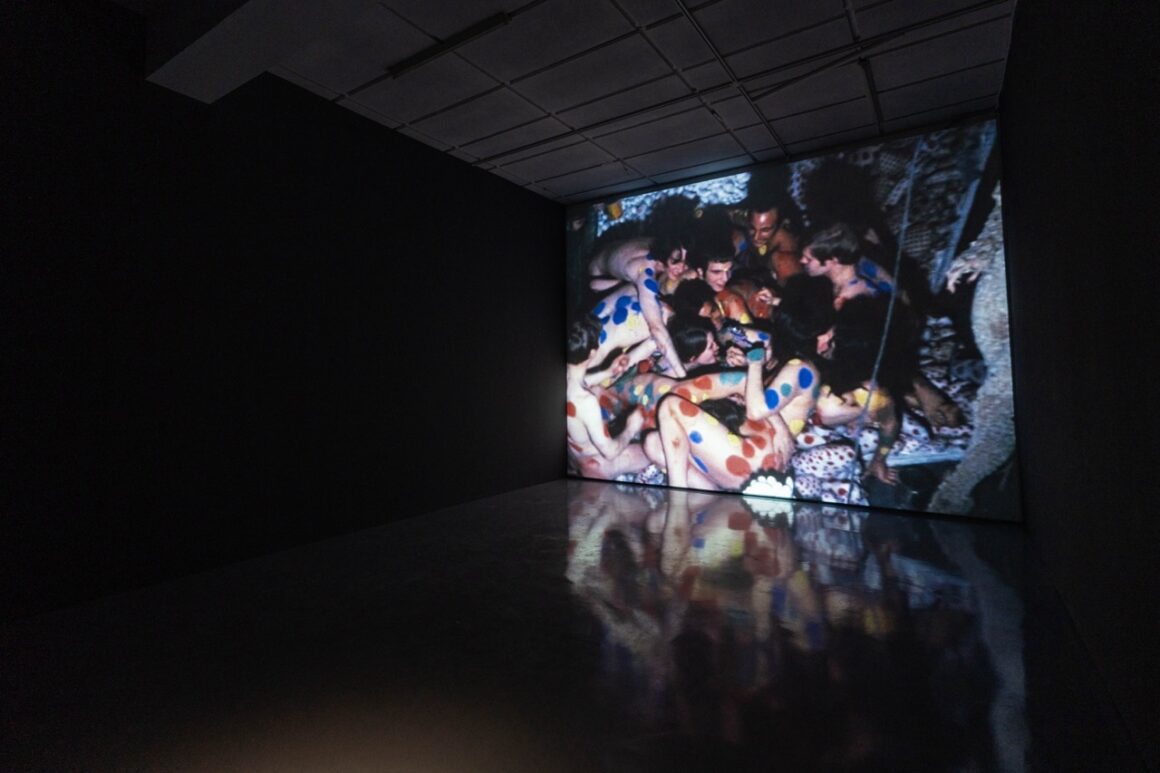
The comparatively understated venue very much allows attendees the space to quietly absorb the impact that Kusama has had on the modern art world. While the displayed introductory materials give a respectable overview, buying the thorough bilingual 73-page exhibition guide (NT$200 with a ticket) is highly recommended, as it gives yet more insight into Kusama’s journey (an audio guide is available for NT$150, Mandarin only).
When I attended on a Sunday afternoon the exhibition got noticeably busier post-1.30 pm, presumably after lunch, but prior to that it was enjoyably uncrowded. Sensibly, photography of the sculptures is allowed, but not of the paintings. The exhibition is open over the Lunar New Year break, with the exception of Monday, January 27th, New Year’s Eve (Tuesday, January 28th) and New Year’s Day (Wednesday, January 29th), and runs until Sunday, May 5th.
There’s a small souvenir section at the exit, which is also open to the general public. While some prices are expectedly on the higher end, the exhibition poster is an affordable NT150.
Hours: 10:00 – 18:00, ticket sales and admission stop at 17:30. Closed on Mondays.
Location: No. 134, Section 2, Heping East Road, Daan District, Taipei City 106
Nearest MRT: Technology Building (Brown Line), five-minute walk.
Website: https://montue.ntue.edu.tw/en/trajectory-and-miracle-kusama-yayoi-1951-2005-from-w-collection-more/
#Ticket price
Adults: NT380
Students: NT330 (age 6 upwards)
Concession tickets: NT190
Free entry for children under 6

